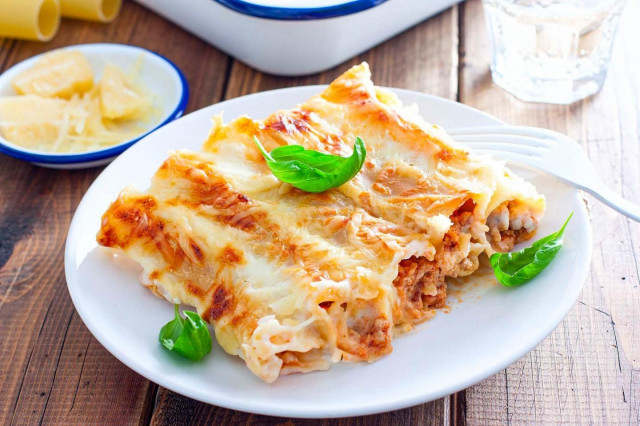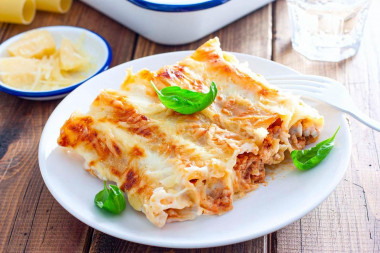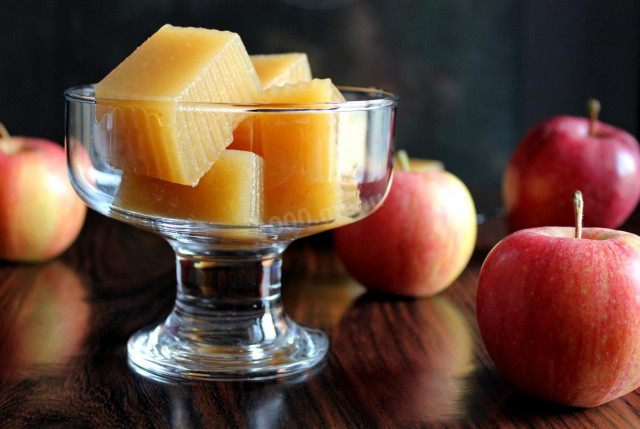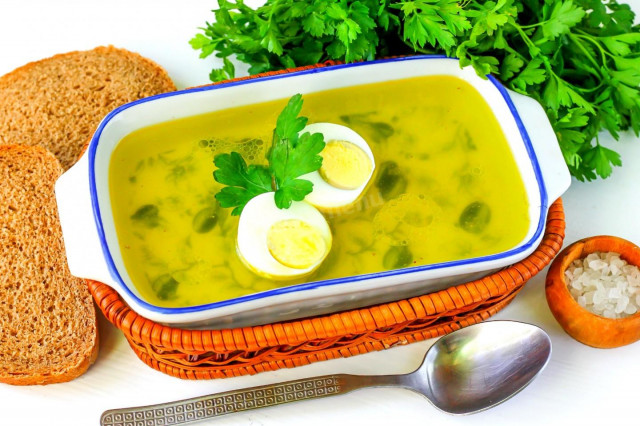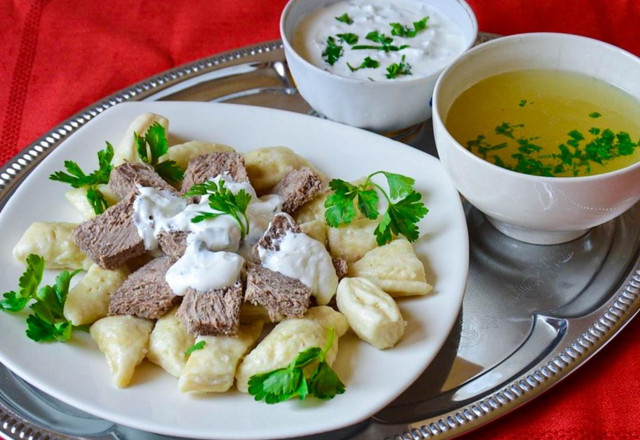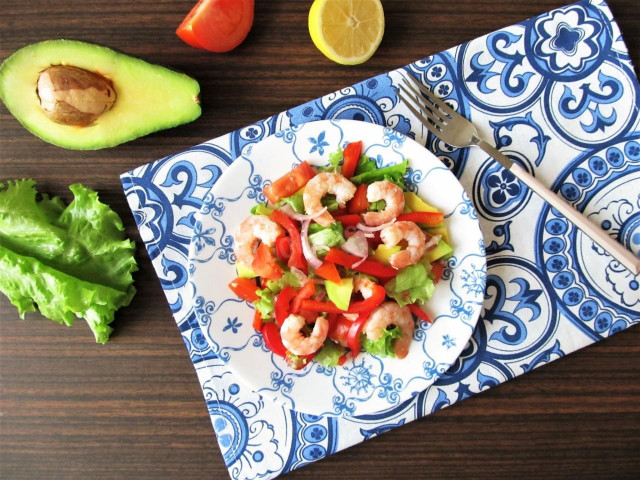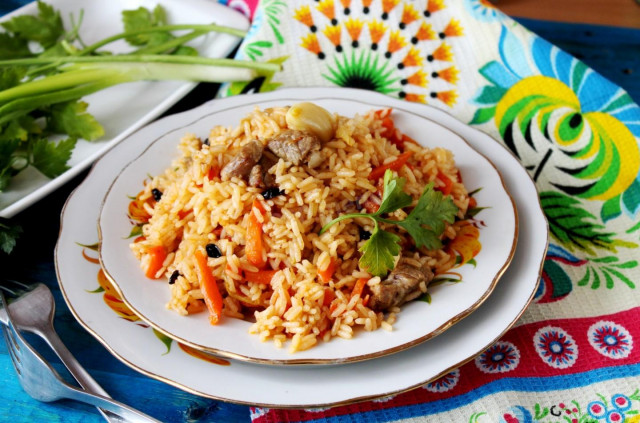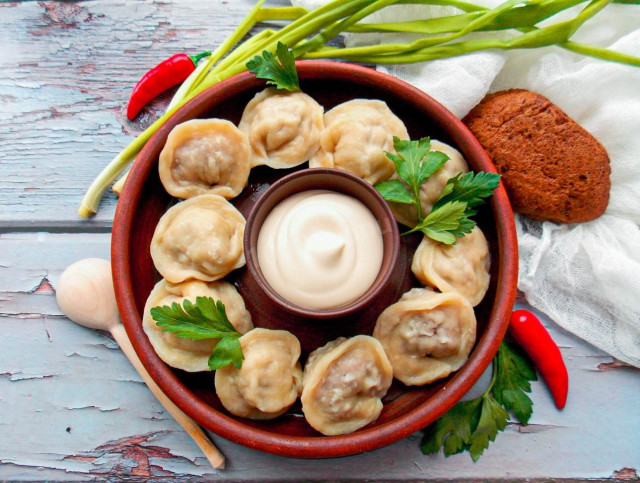Composition / ingredients
Step-by-step cooking
Step 1:
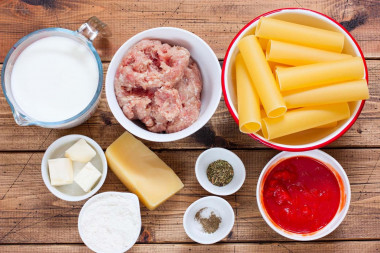
How to bake cannelloni with minced meat in the oven? Prepare the ingredients. Minced meat is suitable from any meat, but for a more "Italian taste" it is preferable to take beef. Tomato sauce can be replaced with tomatoes in their own juice (like mine), ketchup or tomato paste (2 tbsp.l.). From spices, I take Italian herbs, basil, oregano, rosemary are also good. Take any hard cheese, I take Parmesan.
Step 2:
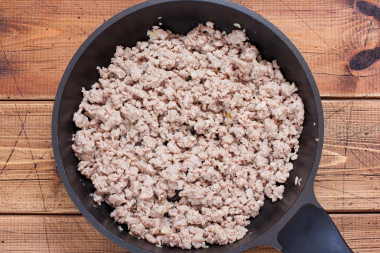
Peel the onion and garlic, finely chop and fry over low heat in oil until transparent. Then add the minced meat to the pan and mash it well with a wooden spatula, kneading large lumps. Fry the meat for 5-7 minutes until the color changes.
Step 3:
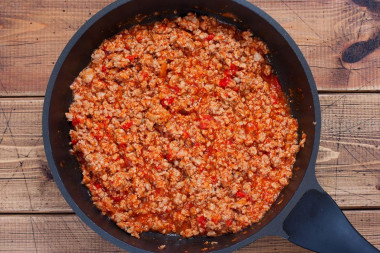
Add tomato sauce or tomatoes in their own juice to the minced meat (here you should pay attention so that there are no large pieces of tomatoes, when stuffing pasta they will interfere). Add salt to taste, ground black pepper and dry herbs. Stir and simmer the meat sauce over medium heat until the liquid evaporates. It will take 5-10 minutes, depending on how much liquid was in the tomato sauce. Leave the finished meat filling to cool.
Step 4:
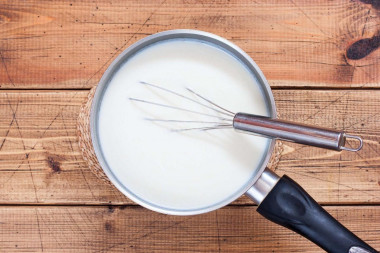
Meanwhile, prepare the bechamel sauce. In a saucepan with a thick bottom, melt the butter over low heat. Add the flour and, with constant stirring, fry it for a couple of minutes. Preheat the milk and pour parts into the flour mixture, stirring it constantly (it is more convenient to use a whisk). Bring the sauce to a boil over medium heat, season with salt and spices. Cook it with continuous stirring for 3-5 minutes until slightly thickened. Then leave the sauce to cool
Step 5:
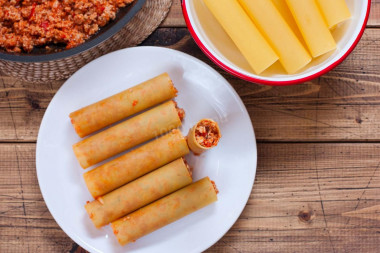
Fill cannelloni with cooled minced meat. Add the filling so that it completely fills the pasta, while trying not to break them. It is convenient to stuff cannelloni with minced meat by placing them vertically on a plate. Turn on the oven to preheat 180 degrees.
Step 6:
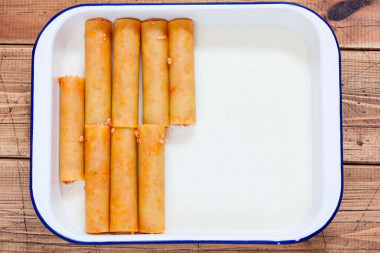
Carefully approach the choice of a baking dish — you need to choose it in size so that the cannelloni lie in it in one layer, preferably tightly to each other. Pour the bechamel sauce into the selected baking dish so that it completely covers the bottom. Put the stuffed pasta in one layer.
Step 7:
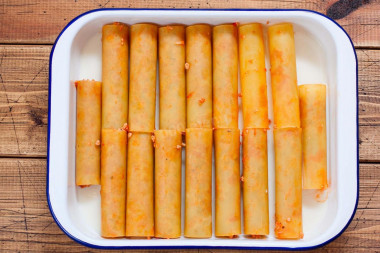
If necessary, you can spread the cannelloni in a chaotic order, but always in one layer, so that when baking they are completely covered with sauce.
Step 8:
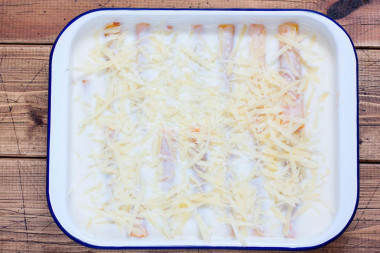
Pour the remaining bechamel sauce over the cannelloni. If the pasta is without sauce, then they may dry out in the oven and will not be tasty. Sprinkle them with grated cheese on top. Place the mold in a preheated oven for 30-35 minutes until a golden crust forms.
Step 9:
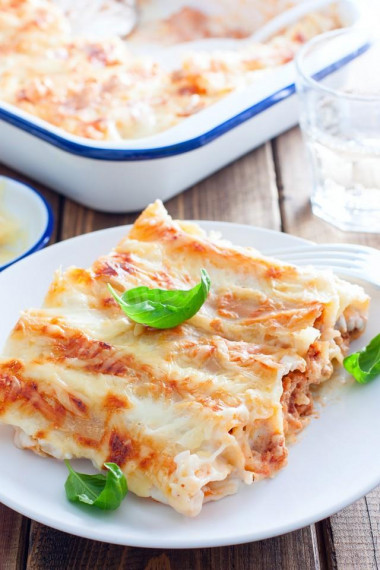
Remove the finished cannelloni with minced meat from the oven and let cool slightly. Cut them into portions with a knife and serve them to the table. Bon appetit!
Use oil with a high smoking temperature for frying! Any oils are useful only until a certain temperature is reached - the point of smoking, at which the oil begins to burn and toxic substances, including carcinogens, are formed in it.
Unrefined oils, with rare exceptions, have a low smoking point. There are a lot of unfiltered organic particles in them, which quickly begin to burn.
Refined oils are more resistant to heating, and their smoking point is higher. If you are going to cook food in the oven, on a frying pan or grill, make sure that you use oil with a high smoking point. The most common of the oils with a high smoking point: refined varieties of sunflower, olive and grape.
How to cook pasta properly, how to cook pasta al dente, how to choose a quality product to avoid disappointment and much more read in the article "Pasta and pasta - the subtleties of choice and secrets of cooking" .
Keep in mind that everyone's ovens are different. The temperature and cooking time may differ from those specified in the recipe. To make any baked dish successful, use useful information about the features of ovens !
Caloric content of the products possible in the composition of the dish
- Onion - 41 kcal/100g
- Whole cow's milk - 68 kcal/100g
- Milk 3.5% fat content - 64 kcal/100g
- Milk 3.2% fat content - 60 kcal/100g
- Milk 1.5% fat content - 47 kcal/100g
- Concentrated milk 7.5% fat content - 140 kcal/100g
- Milk 2.5% fat content - 54 kcal/100g
- Dutch cheese - 352 kcal/100g
- Swiss cheese - 335 kcal/100g
- Russian cheese - 366 kcal/100g
- Kostroma cheese - 345 kcal/100g
- Yaroslavsky cheese - 361 kcal/100g
- Altai cheese 50% fat content - 356 kcal/100g
- Soviet cheese - 400 kcal/100g
- Cheese "steppe" - 362 kcal/100g
- Uglichsky cheese - 347 kcal/100g
- Poshekhonsky cheese - 350 kcal/100g
- Lambert cheese - 377 kcal/100g
- Appnzeller cheese with 50% fat content - 400 kcal/100g
- Chester cheese with 50% fat content - 363 kcal/100g
- Edamer cheese with 40% fat content - 340 kcal/100g
- Cheese with mushrooms of 50% fat content - 395 kcal/100g
- Emmental cheese with 45% fat content - 420 kcal/100g
- Gouda cheese with 45% fat content - 356 kcal/100g
- Aiadeus cheese - 364 kcal/100g
- Dom blanc cheese (semi-hard) - 360 kcal/100g
- Lo spalmino cheese - 61 kcal/100g
- Cheese "etorki" (sheep, hard) - 401 kcal/100g
- White cheese - 100 kcal/100g
- Fat yellow cheese - 260 kcal/100g
- Altai cheese - 355 kcal/100g
- Kaunas cheese - 355 kcal/100g
- Latvian cheese - 316 kcal/100g
- Limburger cheese - 327 kcal/100g
- Lithuanian cheese - 250 kcal/100g
- Lake cheese - 350 kcal/100g
- Gruyere cheese - 396 kcal/100g
- Garlic - 143 kcal/100g
- Whole durum wheat flour fortified - 333 kcal/100g
- Whole durum wheat flour universal - 364 kcal/100g
- Flour krupchatka - 348 kcal/100g
- Flour - 325 kcal/100g
- Butter 82% - 734 kcal/100g
- Amateur unsalted butter - 709 kcal/100g
- Unsalted peasant butter - 661 kcal/100g
- Peasant salted butter - 652 kcal/100g
- Melted butter - 869 kcal/100g
- Mixed minced meat - 351 kcal/100g
- Salt - 0 kcal/100g
- Spices dry - 240 kcal/100g
- Hot tomato sauce - 99 kcal/100g
- Cannelloni - 350 kcal/100g
- Nutmeg - 556 kcal/100g

